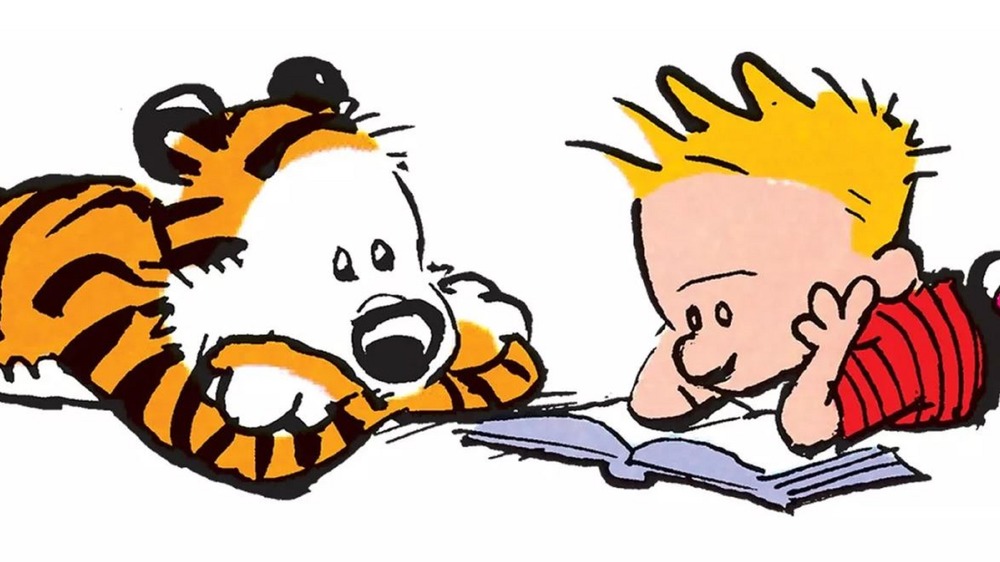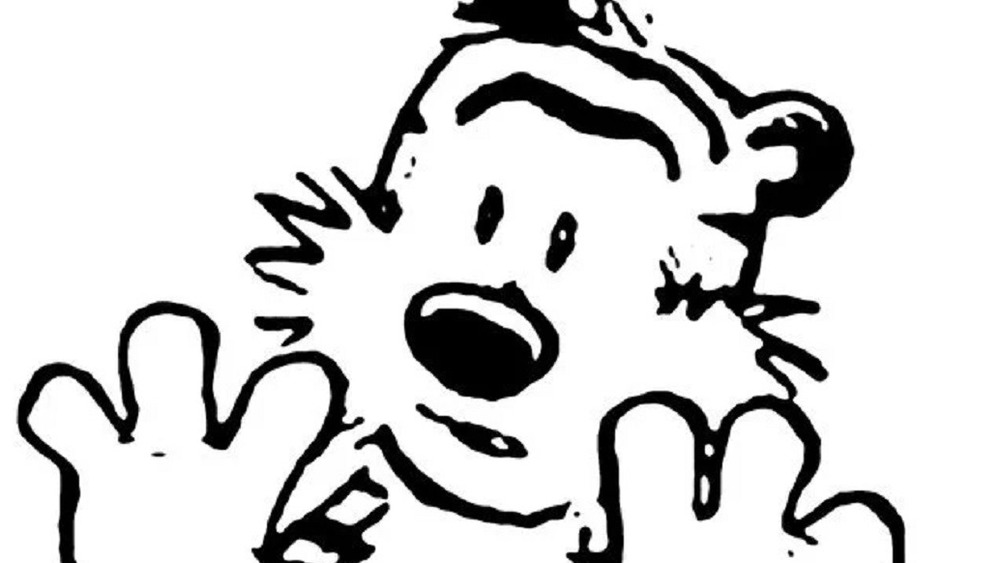The Real Reason Calvin And Hobbes Ended In 1995
Comics in newspapers have a long and storied history, and whenever people discuss the absolute best comic strips out there, someone — or quite possibly everyone — is likely to bring up Calvin and Hobbes. Though you can still find great new comics today, Bill Watterson's classic work about a mischievous boy and his toy tiger is virtually unique in the world of syndicated comics, thanks to its knack of combining goofy gags with razor-sharp insight and its deep reservoir of incredible visuals.
Calvin and Hobbes is the kind of comic strip that you hope would have gone on for decades, Peanuts-style, and it's easy to assume that few fans would complain if Watterson would have kept his high-quality strips coming to this very day. However, the artist stopped drawing the strip in the mid-1990s, and though its legacy lives on, Calvin and Hobbes disappeared virtually overnight from newspapers. But what could have prompted Bill Watterson to call it quits? Let's take a look at the real reason Calvin and Hobbes ended in 1995.
Bill Watterson felt it was time to stop drawing Calvin and Hobbes
Watterson had a very good, if slightly peculiar, reason to end Calvin and Hobbes. According to The Washington Post, the artist simply decided that he wanted to leave his creations while they were still at the height of their power.
"It seemed a gesture of respect and gratitude toward my characters to leave them at top form," Watterson later wrote in a foreword to The Complete Calvin and Hobbes box set. "I like to think that, now that I'm not recording everything they do, Calvin and Hobbes are out there having an even better time." Indeed, he made good on this vision with the comic's final strip: a colored yet mostly bright-white, winter-themed Sunday strip full of hope and possibility. In its end, the boy and the tiger sled toward the snow-covered forest, with adventure in their heart and a promise to "go exploring."
As Vox notes, the reclusive artist had already taken a couple of breaks from drawing the strip, and since Watterson retired Calvin and Hobbes, he's reportedly mostly focused on watercolors. As such, it appears that he was in a position of being able to end his most famous creation precisely when he felt he needed to in order to preserve its legacy and overall quality — and hasn't shown any apparent need to return to the subject later down the line. All in all, that seems like a pretty fortunate place to be.

